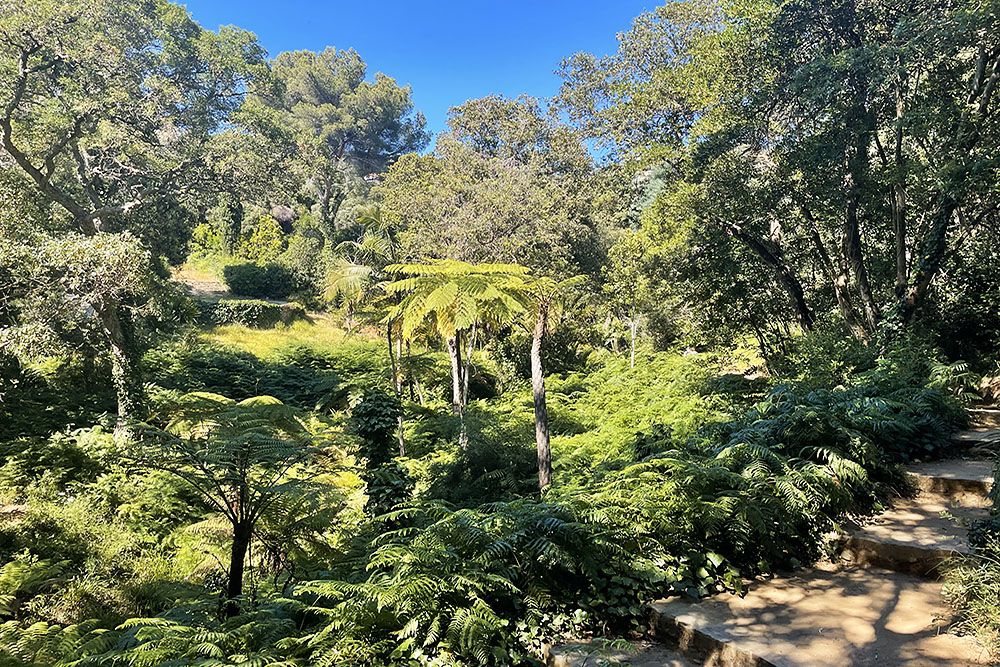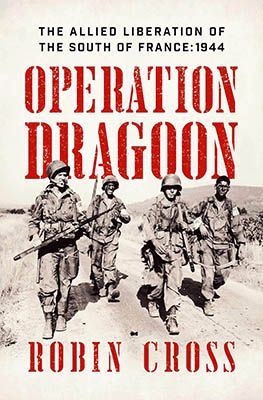On June 6, 1944, the largest amphibious invasion in history took place in Normandy. On this day, over 150,000 allied troops marked a significant turning point in history. Two months later, another allied amphibious invasion took place. More than 84,000 troops landed on several beaches along the French Mediterranean coast on August 15, 1944. This invasion is much less known than that of Normandy. However, the landings on the Provençal beaches were of immeasurable importance for the liberation of Western Europe.
In the run-up to the commemoration of the 80th anniversary of the landings in Provence, we visited special locations. It was an impressive journey through an unprecedentedly beautiful part of France. In this blog, we take you along some commemorative sites that you shouldn’t miss during a holiday in Southern France. To better understand what happened at that time and why, let’s start with a piece of history.
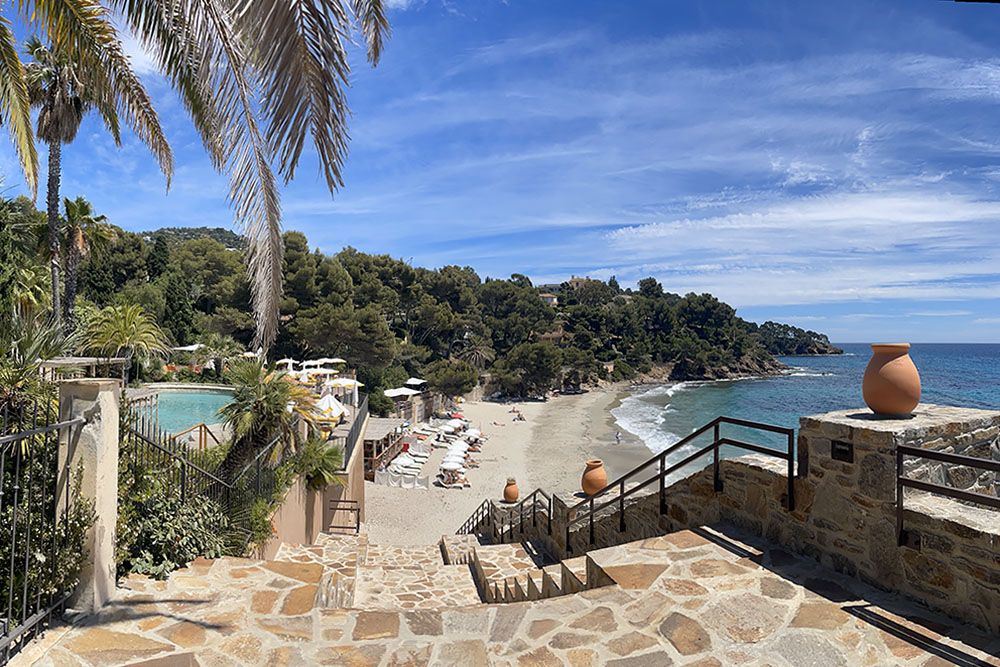
Operation Dragoon: the landings in Provence
As early as 1941, the leaders of the allied countries began discussions to plan the war against the Axis powers (Germany, Italy, and Japan). Despite conflicting interests, the three major allied powers succeeded in defining a common strategy. The opening of the second front on the French Mediterranean coast was a key issue in these discussions. In 1943, the plan for a landing in southern France was approved. The planned invasion, together with the Normandy landings, would exert pressure on the Germans. Initially, the plan was to carry out the landings in Normandy and Provence simultaneously. However, due to logistical problems, the Mediterranean landing had to be postponed.
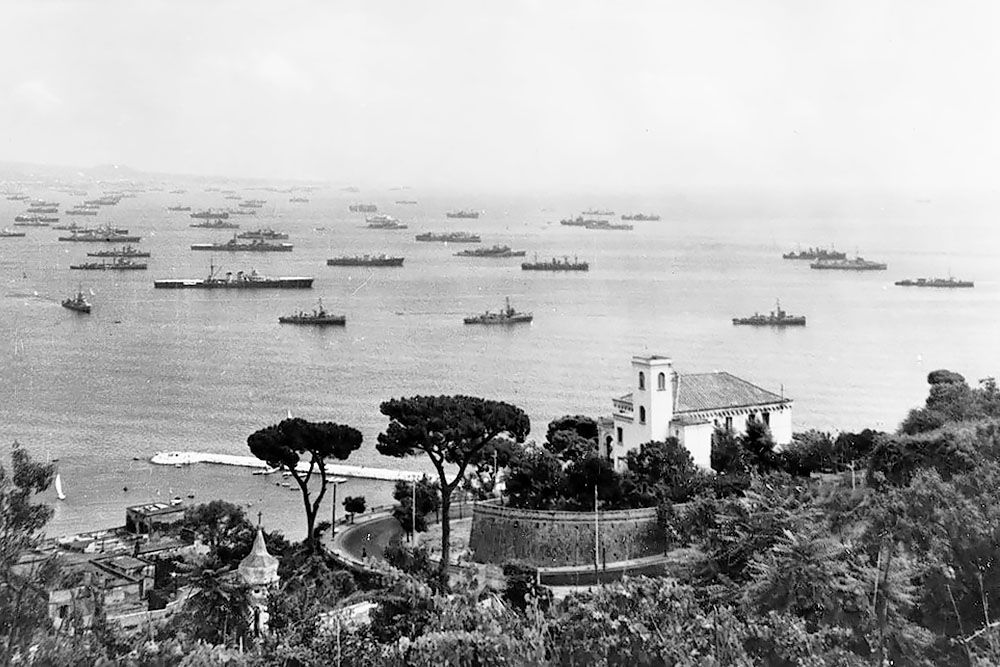
Purpose of Operation Dragoon
The allies aimed to draw German troops away from the Normandy front with the southern invasion. The opposite happened: German military units from the south moved toward Normandy. This allowed the allies to take advantage of the landings in southern France. The operation, mainly carried out by the Americans under the codename Operation Dragoon, also involved the First Free French Army. This marked the first full participation of a French army in the liberation of France, making it especially significant for the French.
Progress of Operation Dragoon
The landings were successful, with minimal losses for the allies. The rapid capture of Marseille and Toulon by the First Free French Army further weakened the German forces. Operation Dragoon opened a new supply route for the allies, drove the Germans out of southern France, and provided the French with the opportunity to participate in their own liberation.
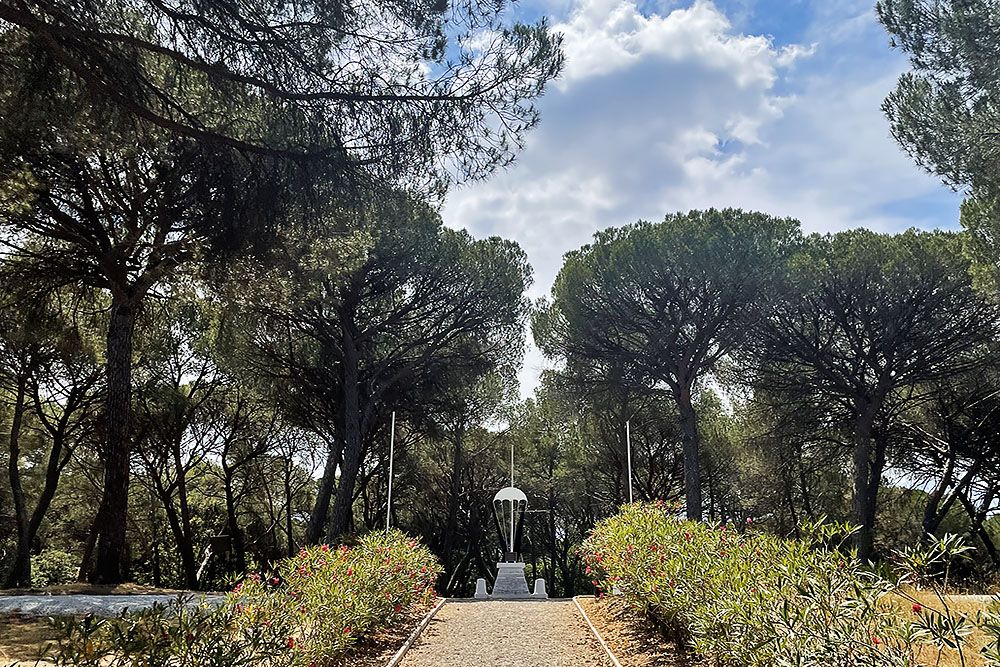
Key locations for the landings in Provence
A few hours before Operation Dragoon, on the night of August 14-15, 1944, Operation Romeo took place: a French amphibious landing involving 750 commandos. The objective was to destroy the German artillery positions at Cap Nègre, which was accomplished within 30 minutes.
Operation Dragoon encompassed three coastal areas: Alpha Beach (Cavalaire, La Croix-Valmer, Pampelonne, Ramatuelle), Camel Beach (the beaches of Fréjus, Saint Raphaël, Dramont, Anthéor, and Agay), and Delta Beach (beach of La Nartelle, in Sainte-Maxime). The 3rd Infantry Division landed on the beaches of Alpha Beach. The 45th Infantry Division landed on Delta Beach, and finally, the 36th Infantry Division landed on the beaches of Camel Beach.
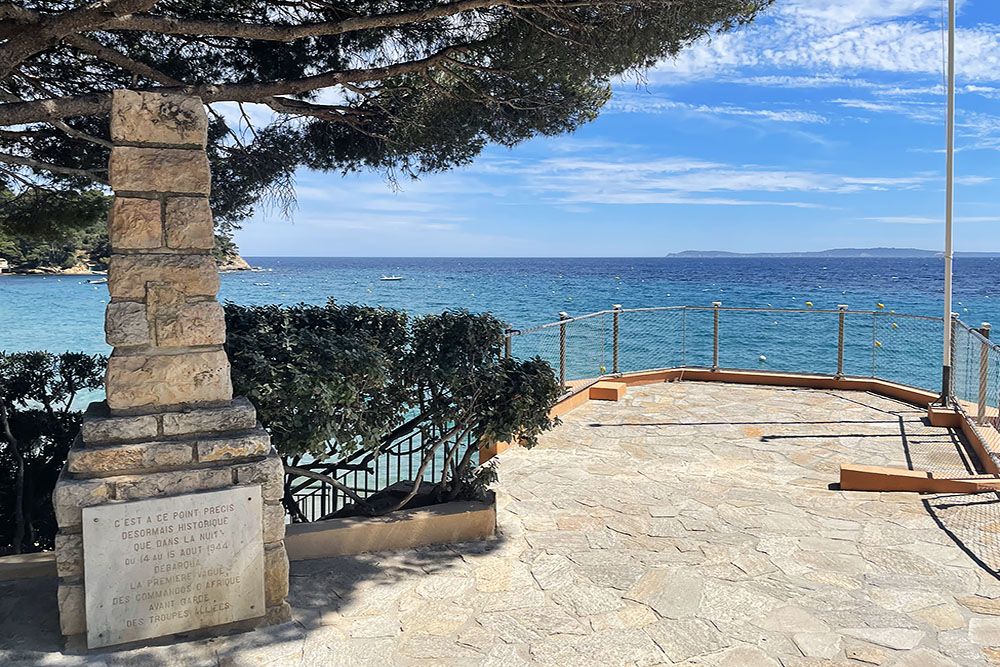
Cap Nègre
Cap Nègre is a beautiful and popular recreation area with various restaurants. It is located fairly close to Le Lavandou, an authentic fishing village known for dolphins and whales. At Cap Nègre, you’ll find crystal-clear seawater and wonderfully tranquil beaches where the plentiful pine trees provide ample shade. However, on August 15, 1944, this small area was the scene of members of the ‘Groupe de commandos d’Afrique’.
The commandos initially landed on the beach east of Cap Nègre, specifically at Rayol-Canadel-sur-Mer. This beach was chosen due to the large staircase that could be seen from a distance. In the small village, visitors can explore the fine sandy beach where nothing now recalls Operation Romeo. The only memorial site can be found in the village itself, where the smallest of the French national cemeteries is located. Here, the graves of some commandos who died during the climb of the cliffs of Cap-Nègre can be found.
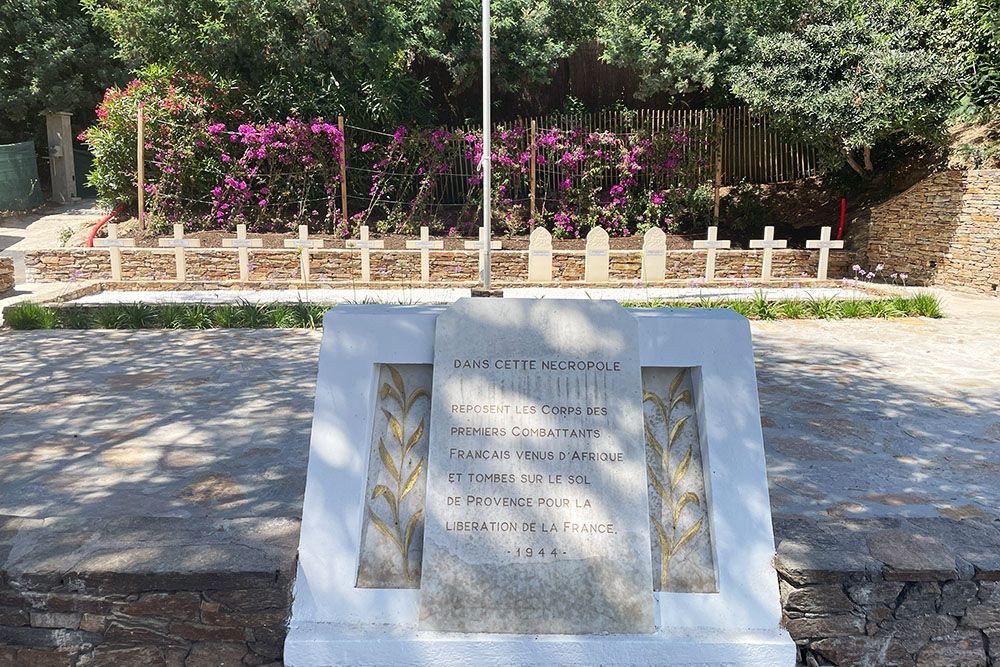
Alpha Beach
The invasion of Alpha Beach began before sunrise on August 15 with the coastal bombardment. Subsequently, minesweepers cleared the water. Remote-controlled explosive-laden Apex boats were used for the first time to create large gaps in the concrete obstacles. The landing troops then advanced. Although there were some Allied casualties from mines and some fighting, the infantry division relatively easily took the coast.
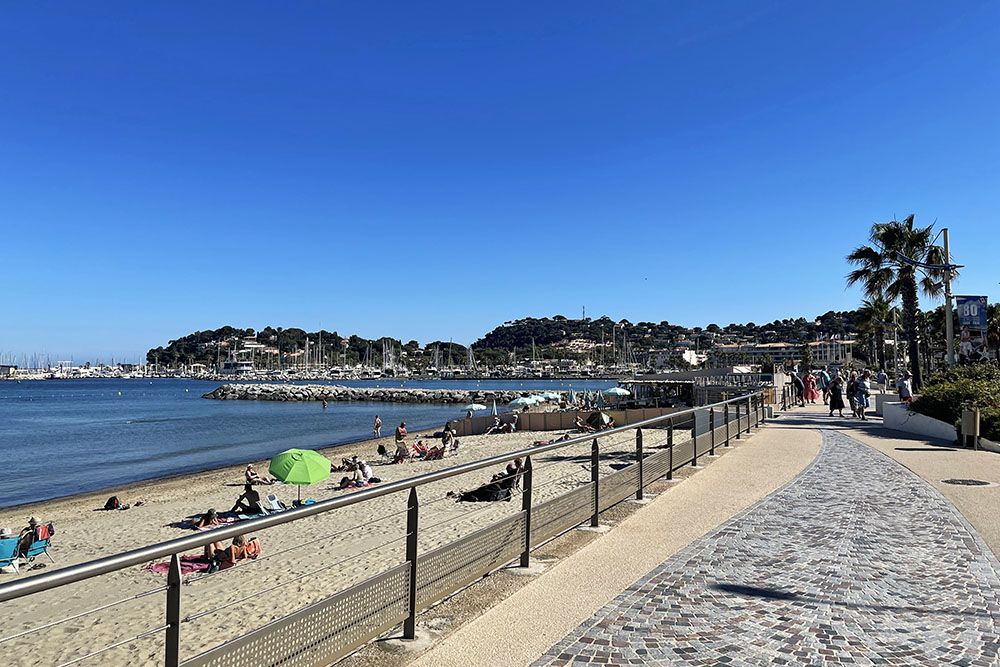
Today, the surroundings of Alpha Beach are a delightful Mediterranean resort. You can find charming villages and towns, including Cavalaire-sur-Mer and La Croix-Valmer. Furthermore, there are beautiful sandy beaches with many water sports opportunities. You can also enjoy delightful walks. There is a 107-kilometer-long hiking trail along the stunning coastline with numerous beautiful viewpoints, the Corniche des Maures.
Monuments and commemorative sites are the primary reminders of the invasion. In La Croix-Valmer, information boards at the beach provide insights into the experiences of French witnesses. Large black-and-white and subsequently colored photographs also help us envision how that day must have appeared to the local population.
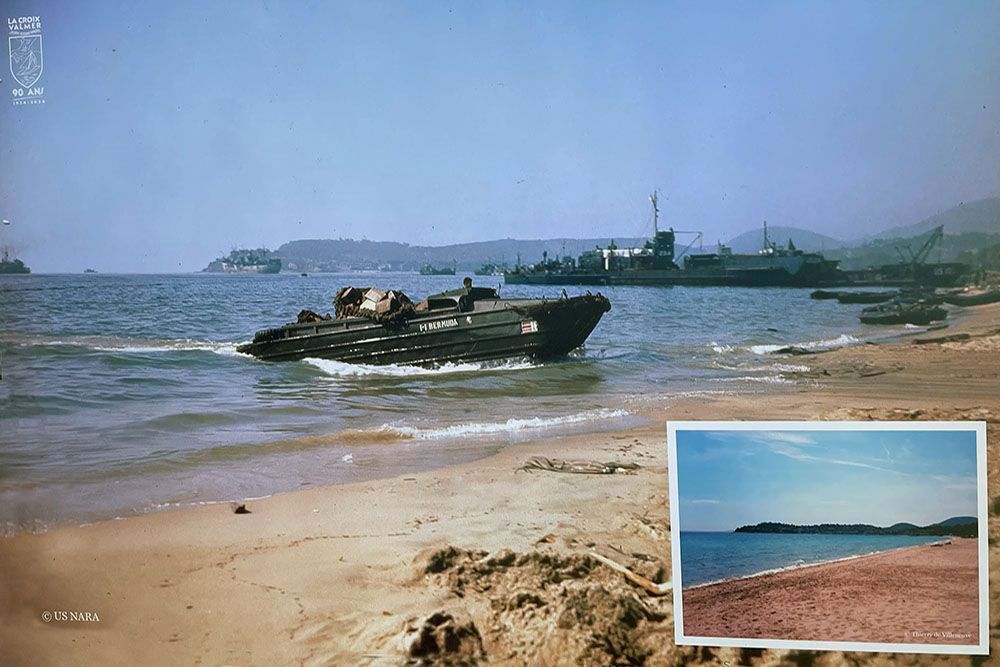
Delta Beach
Continuing our historical journey eastward, we arrive at a large bay with the famous resorts of Saint-Tropez and Sainte-Maxime. In 1944, these resorts on the idyllic French Riviera were the scene of the Delta Beach invasion. The Americans encountered more resistance from the Germans here than at Alpha Beach. However, they managed to capture both Sainte-Maxime and the more inland Le Muy on the same day.
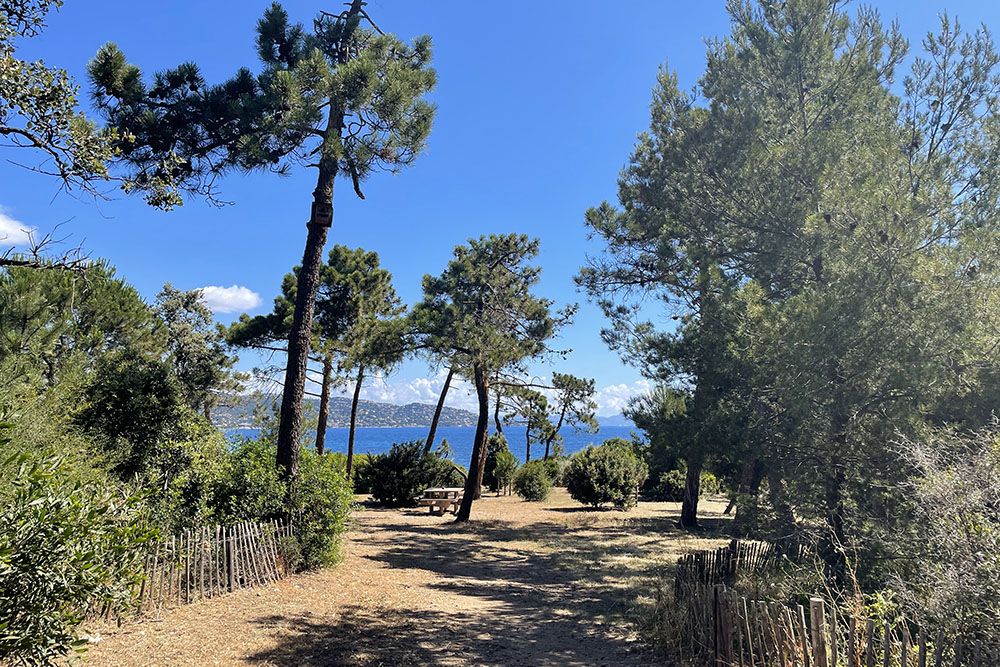
At the tourist information office in Sainte-Maxime, we view a temporary exhibition about 80 years after the liberation of Provence. The texts are in French, but with oral explanations from the staff, we can follow the impressive stories well. Afterward, we head to the nearby Nartelle Beach. On a beautiful, small promontory, amidst beautiful and wonderfully fragrant pine trees, we find an old German battery. Additionally, we find interesting information boards and impressive historical photographs here as well.
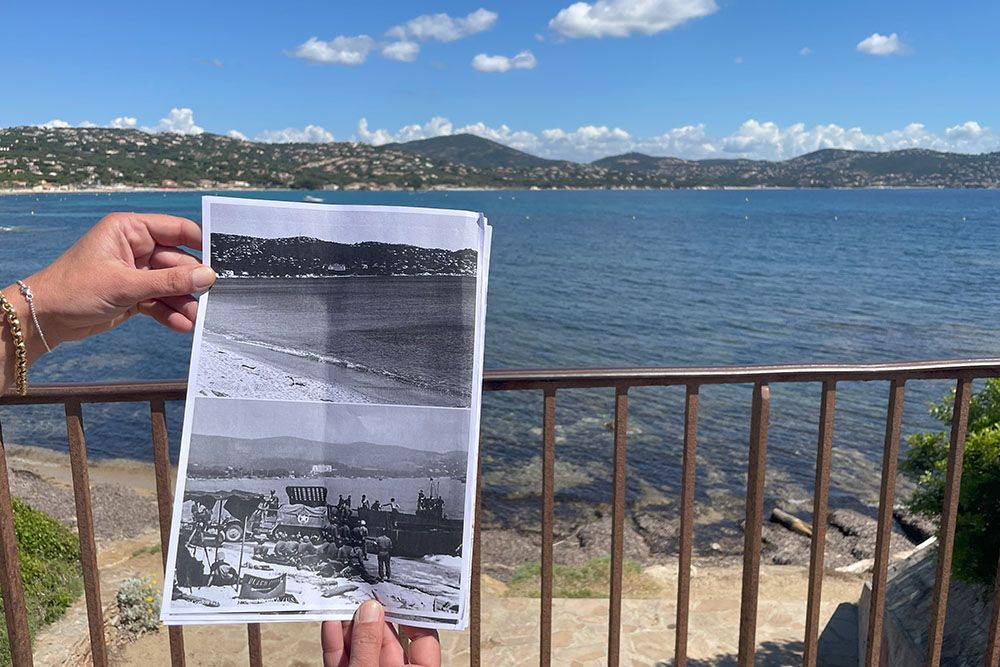
Camel Beach
The northernmost and best-defended of the three coastal areas of Operation Dragoon, known as Camel Beach, had multiple German batteries around the city of Saint-Raphaël. Under heavy German fire, the Allies attempted to land. In sector Red of Camel Beach (near Fréjus), the Allies were unsuccessful, even after air force bombings and naval shelling.
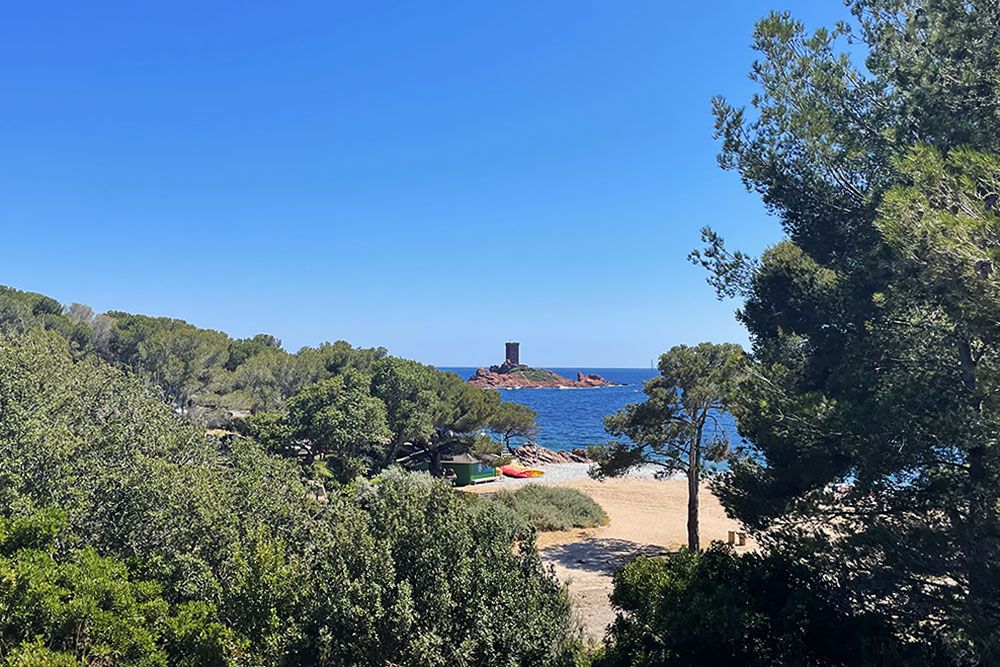
The military leadership then decided to only land on the beaches east of Saint-Raphaël, which was successful. For example, at Dramont, there were no mines as ‘esterellite’ was being mined and shipped from there. The Allies were informed about this location by the director of the quarry who was involved in the resistance. At the beach, we find various monuments, including a replica of a landing craft. Additionally, there are several information boards with photographs. Fortunately, there are also QR codes for accessing the information in languages other than just French afterwards.
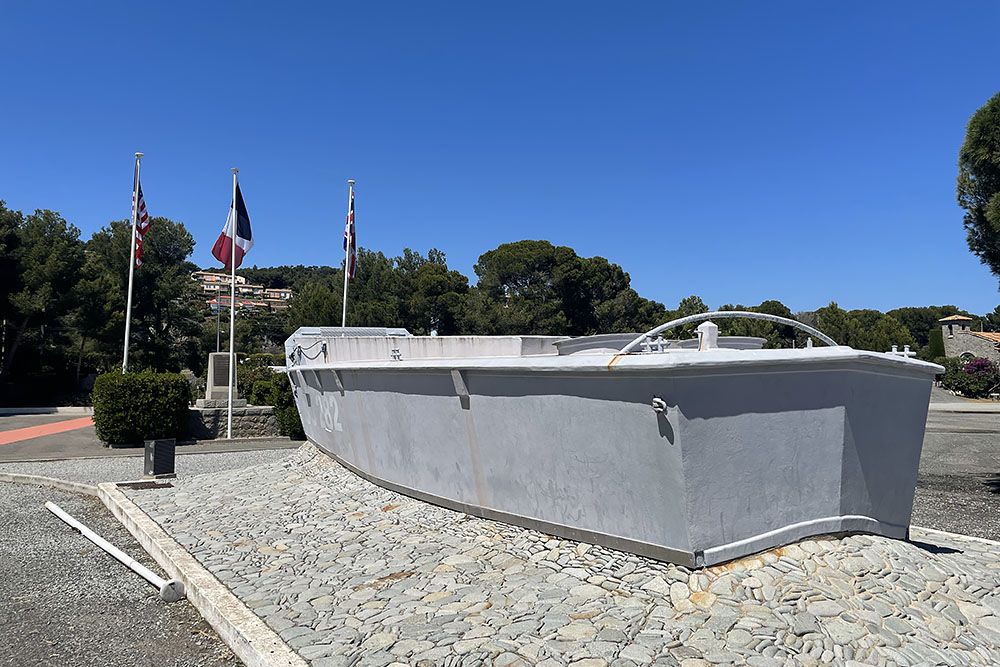
The Anthéor Viaduct
We continue our car journey via the iconic coastal road Corniche d’Or to the Anthéor Viaduct. This viaduct was the target of several bombings in 1943-1944. It was considered a strategic target to cut off the only rail connection between southern France and northern Italy. After months of attacks, three waves of American bombers and the naval ship USS Brooklyn finally managed to destroy two pillars of the viaduct, rendering it impassable.
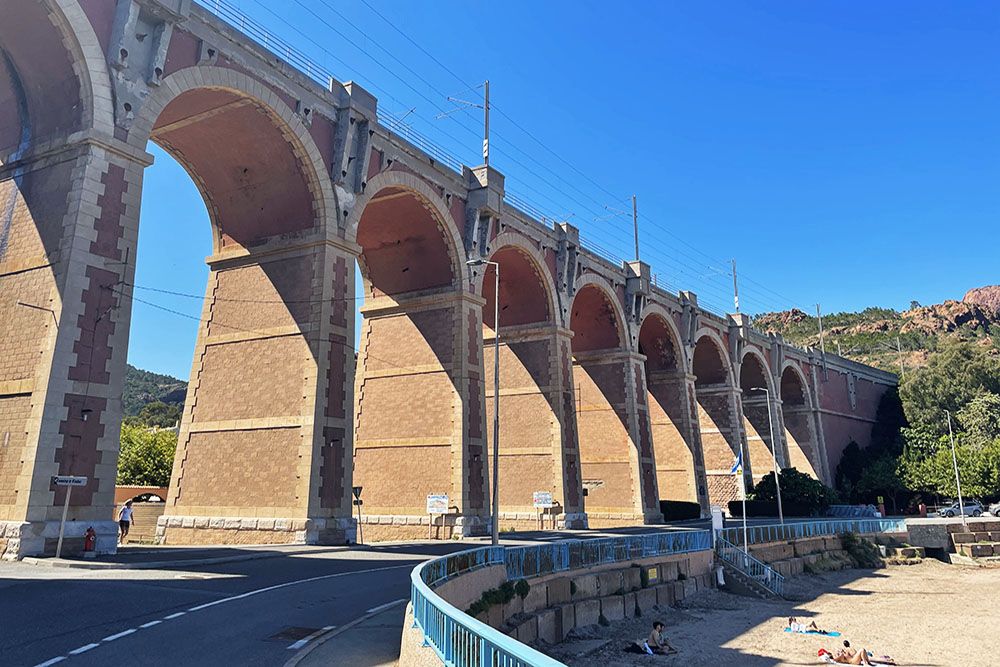
On August 15, 1944, the beach of Anthéor also played a strategic role during the landings in Provence. It was the landing place of 860 American troops. Despite heavy resistance, the beach was eventually conquered. The viaduct and the beach now serve as a memorial for the events during the war.
After visiting the viaduct, we drive a short distance further and arrive at a rocky vantage point where an anti-aircraft installation was built during the Second World War. The view we have here of the Mediterranean Sea and even the Alps is absolutely stunning! The installation was primarily intended to protect the Anthéor Viaduct.
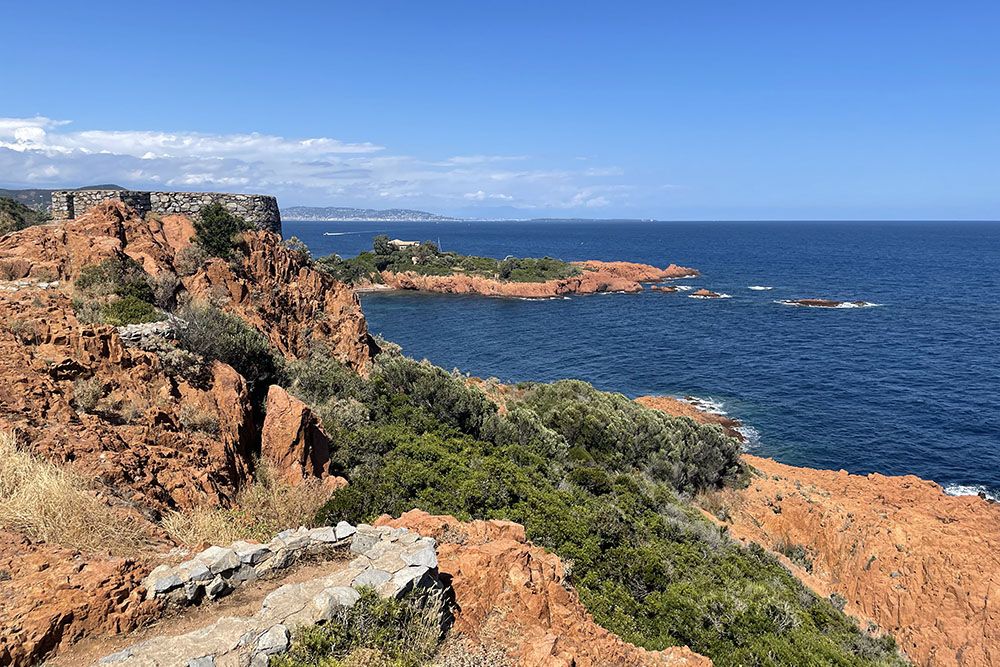
The Saint-Raphaël Memorial Path
In collaboration with the Liberation Route Europe, the city of Saint-Raphaël has established a 23-kilometer route from the city center to Le Trayas. Information panels at ten different locations along the route highlight the resistance, landings, and liberation of Saint-Raphaël. The panels feature QR codes for quick access to the Dutch version of the description. Some of the locations have been mentioned above.
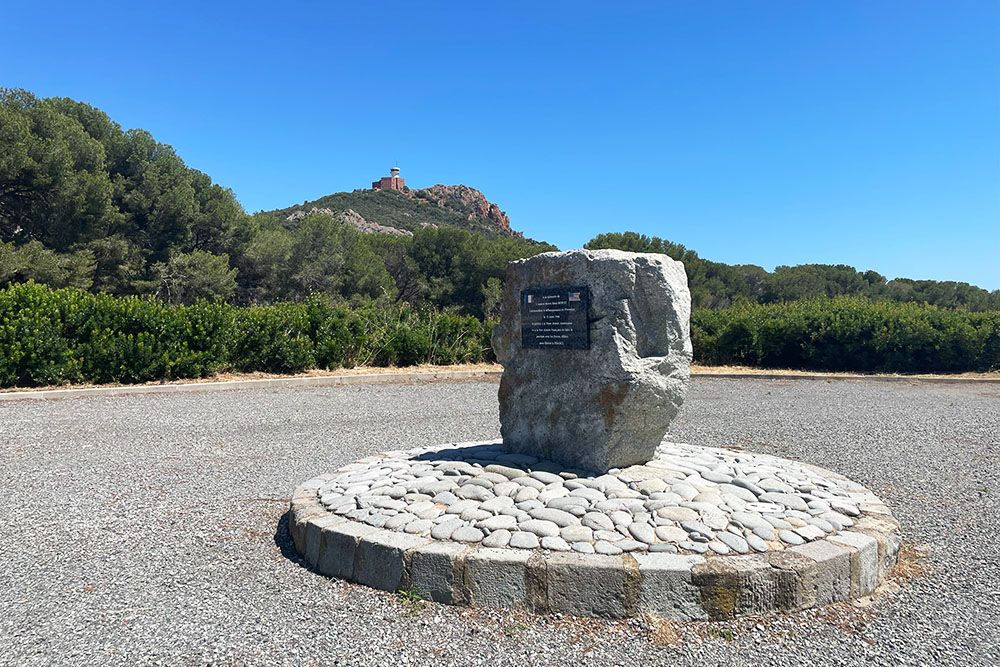
Other commemorative sites of Operation Dragoon
The previously mentioned commemorative sites pay tribute to the courage and sacrifice of those involved in the landings on August 15, 1944. However, in the Var department in the south of Provence, there are many other commemorative sites. Here are a few that should not be missed on your journey through time.
Monument and museum on Mont Faron near Toulon
Just outside Toulon, high on a mountain, there is a monument with a museum. It is dedicated to the memory of the invasion and liberation of Provence. The museum provides a wealth of information about the heroes who came from many different countries to fight side by side here. Think of Britons, Americans, Canadians, and mainland and African and Caribbean French. Glorious history was written on the beaches of Var and during the battles in Toulon and Marseille.
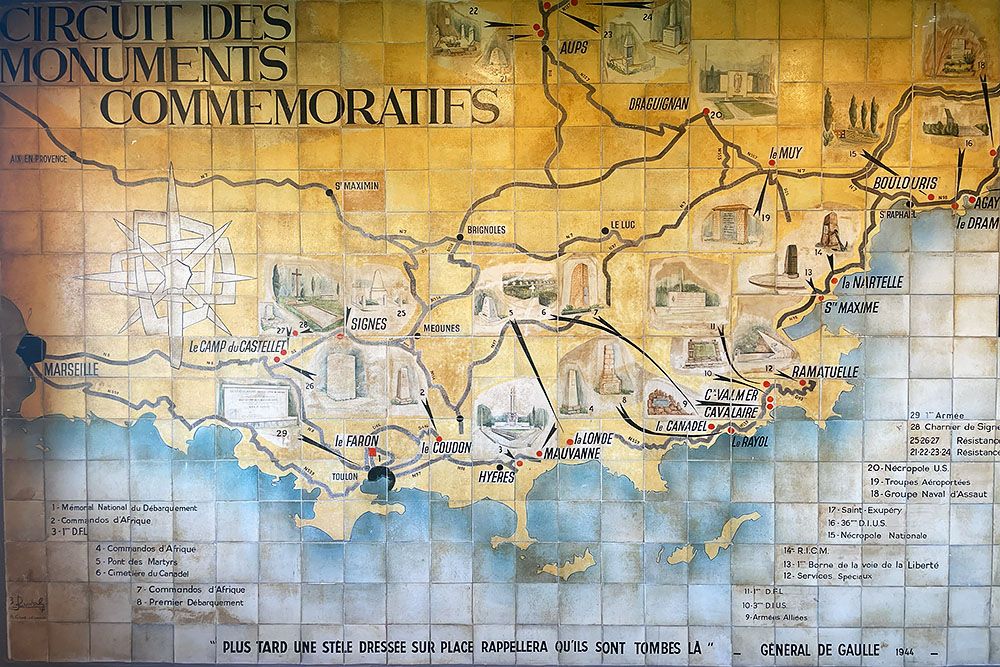
The museum consists of two parts. The first part describes the progress of the landings through photos and testimonies (also available in English!). An audiovisual room features a 15-meter-wide diorama with animation depicting the coastline of Provence, from Anthéor to Marseille. It brings the main lines of all operations to life, from the night of August 14-15, 1944, to the liberation of Marseille. The second part focuses more on remembering all those who contributed to the success of the landings in Provence: government leaders, allied soldiers, members of the resistance, etc. It’s the kind of museum where we can easily spend hours.
You can reach the monument and museum by (rental) car via a winding road that leads to the top of Le Faron. However, we chose to take the cable car. You can reach the mountaintop within a few minutes. Once at the top of the mountain, you have a fantastic view of the Mediterranean Sea and Toulon, among other things. During our visit, we even saw a French navy aircraft carrier lying in the depths.
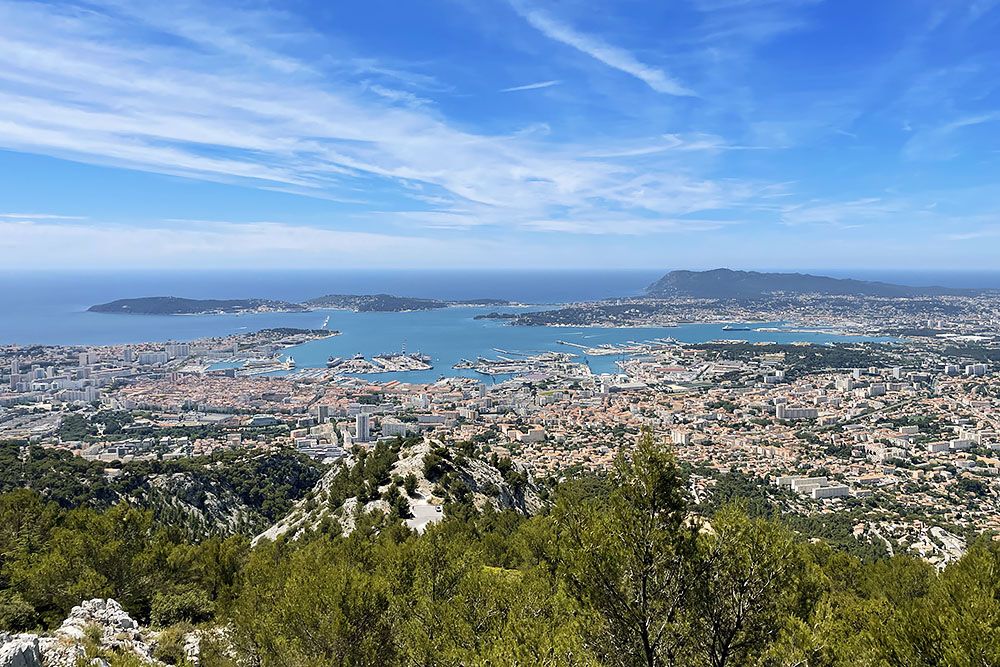
Rhône American Cemetery & Memorial
In Draguignan, you’ll find the Rhône American Cemetery and Memorial. The cemetery is an impressive tribute to the American soldiers who gave their lives during the liberation of Provence in the Second World War. In total, 861 American servicemen have found their final resting place here. The grounds of the Rhône American Cemetery are beautifully landscaped. The monument itself consists of a large colonnade with a bronze map depicting the military operations in the region.
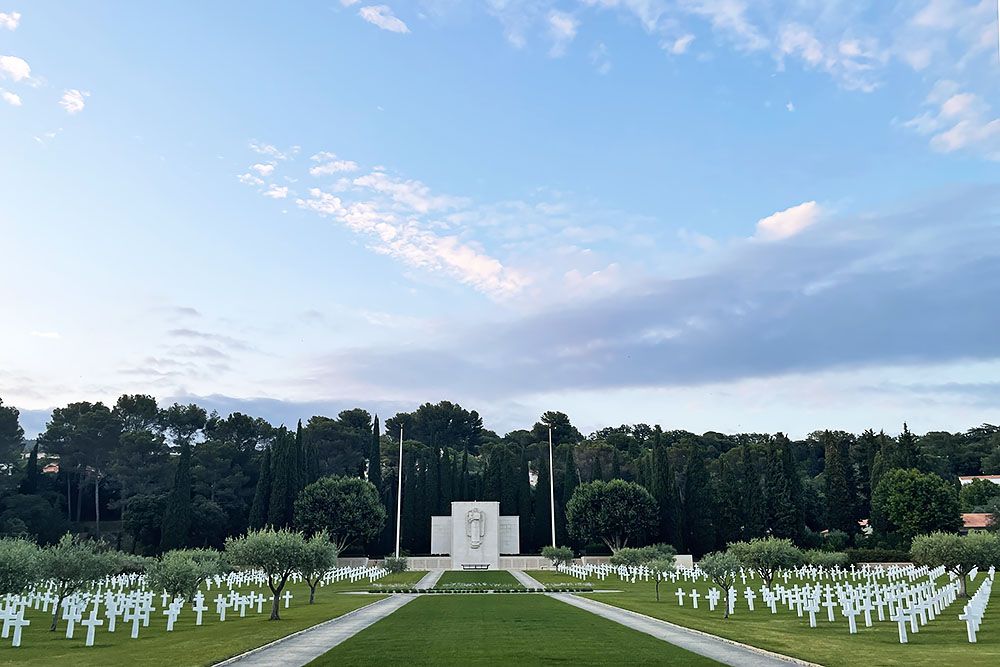
Other attractions in the Var department
In addition to the commemorative sites, the Var department also offers beautiful landscapes, stunning beaches, picturesque towns and villages, idyllic vineyards, and beautiful walks. This area, which is less visited than the more famous parts of the Côte d’Azur, is characterized by its green hills. Over 70 percent of Var is protected and forested. The region is also known as the rosé capital of the world.
Soon, we will publish a separate blog on this site in which we will make suggestions for a fantastic road trip through the Var department.
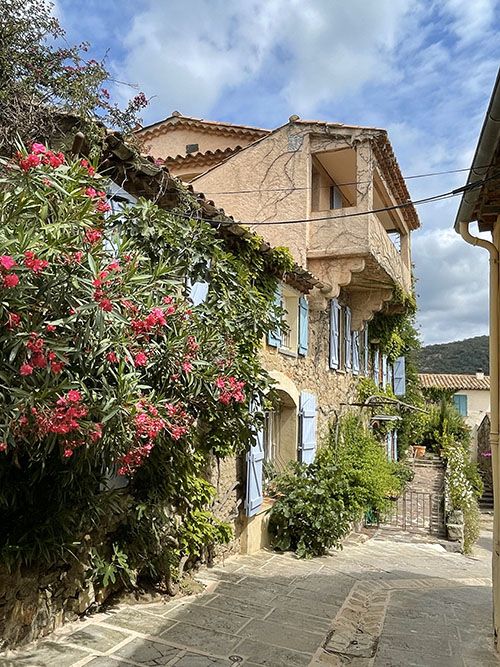
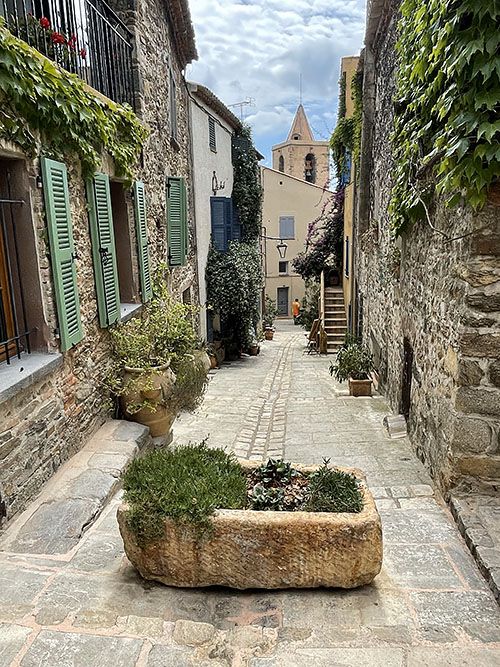
FAQs about Operation Dragoon in Provence
Operation Dragoon was a significant military amphibious operation at the end of World War II. The operation was conducted in the Mediterranean department of Var on August 15, 1944, and included the following key elements:
- Amphibious landings: Allied troops, consisting of American, French, and British units, carried out coordinated amphibious attacks on various coastal areas in southern France, including the beaches of Alpha, Camel, and Delta. These landings aimed to establish a solid base for further Allied operations in southern France.
- Airborne landings: Paratroopers and gliders were deployed to capture and secure strategic targets, including bridges, roads, and defensive works behind enemy lines.
- Liberation of southern France: The operation's primary goal was to liberate southern France from German occupation. After the amphibious landings, the Allied forces quickly gained ground and advanced north, inflicting heavy losses on the German troops.
- Restoration of ports and infrastructure: After the liberation of southern France, the Allies rapidly restored the ports and railway infrastructure in the region. This was crucial for supplying Allied troops in Europe.
- Political implications: The operation led to the collapse of the Vichy regime and the restoration of the French state, allowing the forces of the Provisional Government of the French Republic to regain control of the French resistance.
The landings in Provence took place in the Var department on the Mediterranean coast, between the coastal towns of Cap Nègre in the west and Saint-Raphaël in the east.
The landings took place on the night of August 14-15, 1944. This was 70 days after D-Day, the day of the landings in Normandy. The landing craft used during D-Day were redeployed in Provence.
Operation Dragoon was considered a success for the Allied forces. It allowed them to liberate much of southern France much earlier than planned, while inflicting heavy losses on the German troops, and quickly restoring the French ports of Marseille and Toulon to operational status. This was crucial for supplying Allied troops in France.
Operation Dragoon was important because it enabled the Allied liberation of southern France, thereby opening a second front in Western Europe. This gave the Allies the opportunity to further divide the German forces and relieve the pressure on the German defense in Northwestern Europe. By opening this second front, the German resistance on multiple fronts was weakened, ultimately contributing significantly to the Allied victory in Europe.
Operation Dragoon is significantly less known than Operation Overlord, mainly due to the following factors:
- Scale and impact: Operation Overlord (the Normandy landings) was the largest amphibious invasion in history and led to the liberation of Western Europe. The scale and impact of Operation Overlord were significantly greater than those of Operation Dragoon.
- Media attention: Operation Overlord received significantly more media attention and publicity, both during and after the invasion. The Allied landings in Normandy were widely covered in the media and contributed to public awareness of Allied efforts in Europe.
- Heritage and commemoration: the influence of Operation Overlord is clearly felt in the many commemorative sites, museums, and events dedicated to it. This has enhanced the familiarity and remembrance of Operation Overlord. Operation Dragoon received less attention in this regard.
Operation Dragoon included three sectors consisting mostly of small beaches: Alpha Beach (near Cavalaire-sur-Mer), Delta Beach (near Le Muy, Saint-Tropez), and Camel Beach (near Saint-Raphaël). In addition, landings took place on the beaches around Cap Nègre, but these were part of Operation Romeo. The aim of this operation was to destroy the German artillery positions near Alpha Beach before Operation Dragoon.
Perhaps the most important commemorative site of the landings in southern France is the monument on Mont Faron in Toulon. Here, there is also a museum where you can learn a lot about what happened during Operation Dragoon and why. Our tip is to start your commemorative journey here. Furthermore, at the beaches of Alpha Beach, Delta Beach, Camel Beach, and Cap Nègre, there are monuments and information panels. Finally, there are several small and large cemeteries where you can pay tribute to those who fought for our freedom.
We made this unique, historical road trip to many commemorative sites of Operation Dragoon at the invitation of Atout France and the tourism offices of Provence Méditerranée, Var department, Golfe de Saint-Tropez, Sainte-Maxime, Saint-Raphaël, Estérel Côte d’Azur, and Dracénie Provence Verdon. The content of the blog was independently and objectively compiled based on our own impressions.
